In this NewsFlash, we hear how the proton appears to be smaller than we thought, prompting a reevaluation of some trusted laws of physics, how antidepressants in seawater can make shrimps swim towards danger and why some male fireflies flash together. Plus, a novel mechanism for natural selection - beneficial bacteria!
In this episode

00:18 - The Shrinking Proton
The Shrinking Proton
New research published in the journal Nature suggests that the proton might be as much as 4% smaller than we previously thought, and this discovery might prompt a revaluation of some trusted laws of physics...
Protons are one of the basic subatomic particles - atoms are made of protons, neutrons and electrons (except hydrogen, which lacks a neutron).
The size of the proton is a value used in Quantum Electrodynamics (QED) and in spectroscopy, but so far has only been known to an accuracy of about 1%. Physicists would obviously like a more accurate figure, but only recently has this been experimentally possible.
To get a more accurate measurement, Randolf Pohl at the Max Planck institute for Quantenoptik in Germany used a specialised particle accelerator to alter hydrogen atoms and replace the electron with a particle called a muon - creating muonic hydrogen. Muons have the same charge as electrons, but roughly 200 times more mass. This means it will orbit much closer to the proton and as such interacts more closely with it, allowing us to more accurately probe the proton's properties.
Muonic hydrogen only survives for around one microsecond, but this is long enough to blast the atoms with a pulse of laser light, which causes the muon to jump up to a higher energy level. When it falls back down, it releases some energy in the form of x-rays. Detecting and analysing the energy of the x-rays released tells us the energy difference between the 2 states. This energy gap, known as the Lamb shift, is determined by the size of the proton.
This gives results that are more accurate than other methods of proton measurement, but they suggest the proton is actually 4% smaller than we thought. This could have implications for the theories of quantum electrodynamics, or could imply that the Rydberg constant, a value used in spectroscopy - for identifying what elements we can see in interstellar dust, for example - may not be correct.
Physicists are likely to be queuing up to check their finding, putting every element of the experiment and calculations under scrutiny, so we'll have to wait and see what this measurement really means for modern physics - but this could be a very significant shakeup.
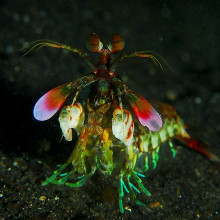
02:59 - Anti-depressants could mess up marine food webs
Anti-depressants could mess up marine food webs
Anti-depressants that end up in sewage effluent could have a major impact on marine wildlife, causing shrimp to swim towards instead of away from light. That may not sound important, but it is, because hanging around in well-lit waters make these animals far more likely to be eaten by fish or birds, potentially disrupting entire food webs.
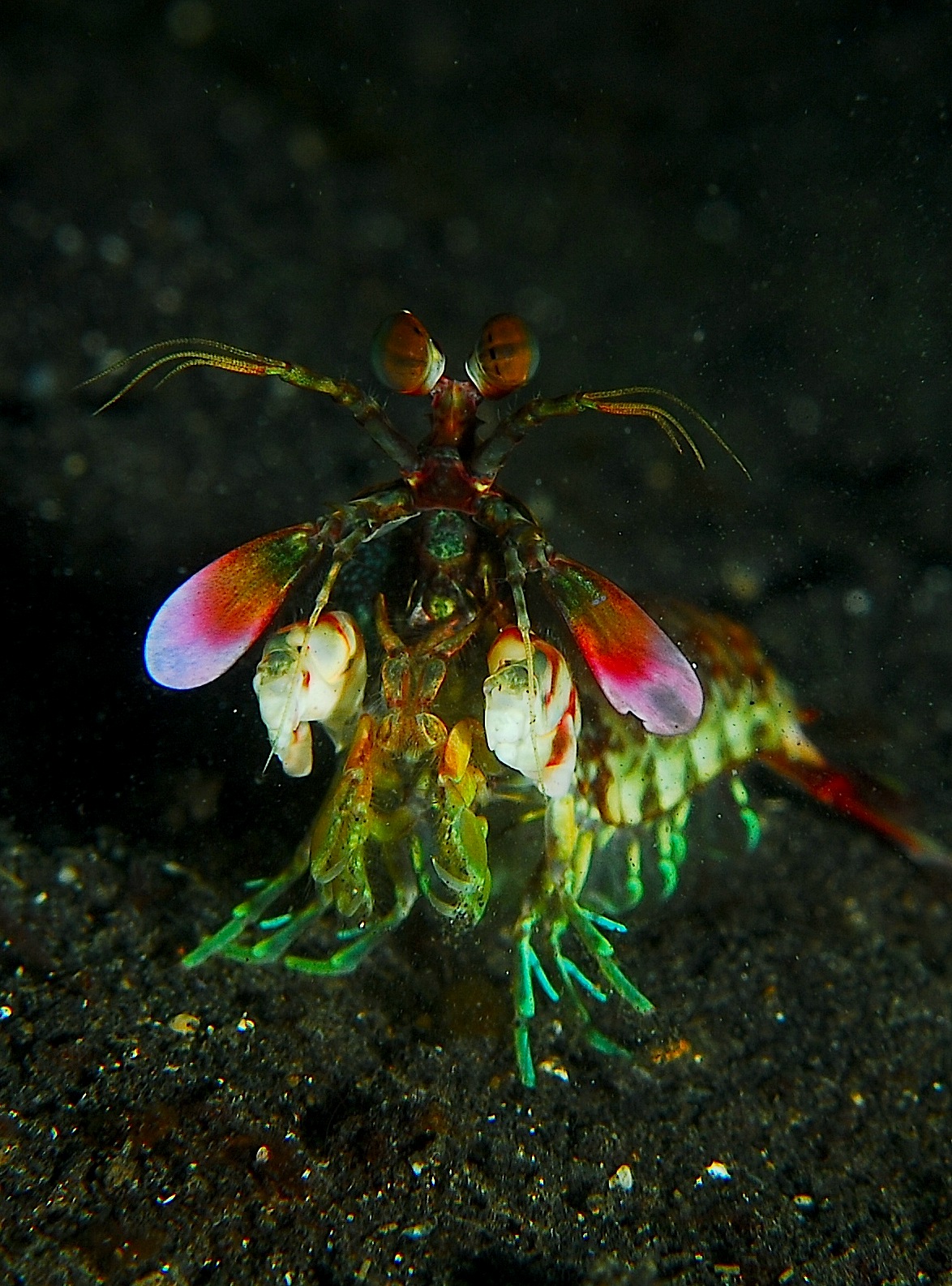 Publishing in the journal Aquatic Toxicology, Yasmin Guler and Alex Ford from the UK's University of Plymouth, got the idea for this study from a type of parasite that infects shrimps, making them more likely to swim towards light where they are eaten by other animals, that are the next step in the life-cycle of the parasite. The parasites change their host's swimming behaviour by manipulating levels of serotonin in their brain.
Publishing in the journal Aquatic Toxicology, Yasmin Guler and Alex Ford from the UK's University of Plymouth, got the idea for this study from a type of parasite that infects shrimps, making them more likely to swim towards light where they are eaten by other animals, that are the next step in the life-cycle of the parasite. The parasites change their host's swimming behaviour by manipulating levels of serotonin in their brain.
The researchers wondered if the anti-depressant drugs people take to target serotonin levels and control their mood might have a similar affect on other animals.They studied a common species of crustacean called Echinogammarus marinus, that lives between the tides - lift up a frond of seaweed on the beach and you might well see them hopping and wriggling around - on coasts from the North Pole down to southern Portugal.
The shrimps were kept in tanks and exposed to seawater containing different levels of various drugs including the anti-depressant fluoxetine - better known as Prozac. Over a course of three weeks, the shrimp exposed to 100 ng/L of fluoxetine were five times more likely to swim towards light, instead of away from it, compared to shrimp in clean seawater.
A 2009 study, showed a similar affect in a fish called the fathead minnow. When they were exposed to fluoxetine for 5 days, they become more likely to be caught by predators.
Not all the drugs we take are absorbed in the body, but some pass right through and end up being flushed down the toilet. These drugs aren't removed in normal sewage processing plants, and become concentrated in rivers and estuaries at levels up to and higher than those tested in this study.
Pollution from drugs is currently largely overlooked, but studies like this are starting to draw attention to the potentially devastating ecological problems they cause. It's possible that many other crustaceans, and other marine wildlife, could be similarly affected by hormone disrupters like this and many other manmade chemicals that are finding their way in increasing concentrations into the wild.
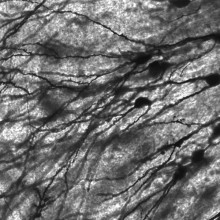
06:25 - Growing new brain cells
Growing new brain cells
Researchers in America have identified a chemical that encourages the growth of new neurons - and protects against neurodegeneration.
Steven McKnight at UT Southwestern and colleagues screened 1000 different chemicals - and found 8 candidates that seemed to support formation of neurons in a region of the mouse brain called the dentate gyrus. This region, in both mice and humans, is thought to contribute to the formation of new memories, and is one of the few regions known to have high levels of neurogenesis even in adults.
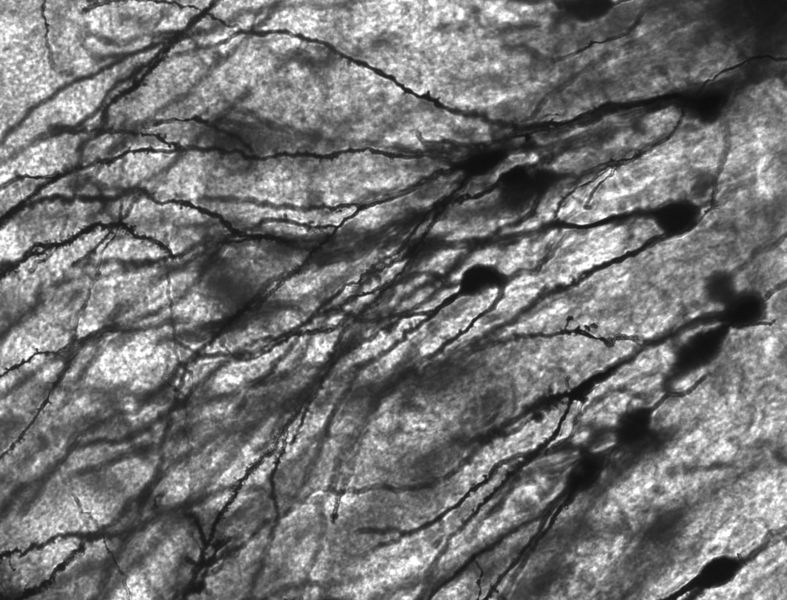 One of the eight candidates, P7C3 had favourable pharmacological properties, so the researchers focussed their attentions on this. It works by preventing apoptosis - or programmed cell death - in newborn neurons. The process of neurogenesis is long and perilous - neurons form and migrate over the course of two to four weeks to the desired site, and many do not survive this process.
One of the eight candidates, P7C3 had favourable pharmacological properties, so the researchers focussed their attentions on this. It works by preventing apoptosis - or programmed cell death - in newborn neurons. The process of neurogenesis is long and perilous - neurons form and migrate over the course of two to four weeks to the desired site, and many do not survive this process.
Further research in mutant mice that lack a gene essential to normal brain development showed a marked increase in neurogenesis when on a prolonged course of P7C3. As well as new neurons forming, a measurement of electrophysiological activity showed that the dentate gyrus was functioning as it should be - so the new neurons are properly incorporated and functional.
There was also tantalizing evidence that P7C3 also enhanced the birth of new neurons in aged rats. As rats age, they tend to show a reduction in neurogenesis alongside a reduction in the ability to form new memories. Rats on a daily dose of P7C3 showed an increased ability in standard learning and memory tests, and also a higher rate of neurogenesis.
The next step is to identify the molecular target for P7C3, but this finding could point the way to new neuroprotective drugs that prevent or treat diseases like Alzheimer's.
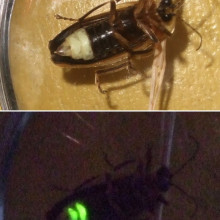
08:20 - Nature’s firework displays help females spot males
Nature’s firework displays help females spot males
Why do fireflies flash in time? Their rhythmic, bioluminescent displays are extraordinary phenomena, sometimes lighting up entire forests with bright pulses of light. But why it happens is one of nature's great mysteries - there are lots of ideas, but until now no one has experimentally tested any of them out.
Now Andrew Moiseff from the University of Connecticut and Jonathan Copeland from Georgia Southern University in the US have done just that. Their study, in the journal Science, suggests that swarms of male fireflies flash simultaneously so that females can recognise a potential mate from their own species.
Male fireflies fly around giving off a characteristic pattern of flashes, a different one for each species, like a system of Morse code. If a female spots a male of the same species, she will flash back during one of his pauses.
For around 1% of the 2000 firefly species - which are in fact a type of beetle - males will synchronise their flashes over large areas.
To test out their ideas of why this happens, Moiseff and Copeland created a virtual firefly world in the lab. They collected female Photinus carolinus fireflies, a synchronous species from the Smokey Mountains National Park in Tennessee, and flashed an array of LED lights at them, to mimic males of the same species.
When all the LEDs flashed together, females were duped into thinking they were real males, and they responded by flashing back around 80% of the time.
When the LEDs flashed out of sync, the females hardly responded at all - they only flashed back 10% of the time or even less.
It seems that when fireflies are crowded together, females can only make out individual males when they all flash together - otherwise it just looks like a jumble of flashing lights to them.
Flashing males are constantly on the move, which means that if a female focuses too narrowly she could easily miss parts of his characteristic flash pattern as he flies in and out of view. Instead, she probably needs to look over a larger area of space so she can pick out these moving patterns. But if there are lots of males, all flying around and flashing out of time, the patterns quickly become muddled and confused.
The next step of the research will be to work out whether female fireflies' tiny brains are wired up in a way that means they can't detect asynchronous flashes, and ultimately, whether they are driving the evolution of males that flash in time and put on these extraordinary night time firework displays.
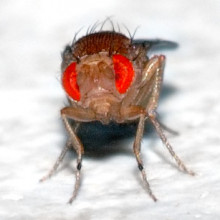
12:37 - Naturally Selected Infections - Symbiotic Bacteria and Evolution
Naturally Selected Infections - Symbiotic Bacteria and Evolution
Professor John Jaenike, Rochester University
Ben - Also in the news this week, researchers in America have identified a novel mechanism for evolution. In the wild, a gene that produces an organism's chances of surviving increases their odds of reproducing. It's usually passed down to the next generation and so, that gene will become more common in the population. But what if instead of a gene giving an advantage, it's actually an infection with a symbiotic bacteria? Professor John Jaenike is a biologist at Rochester University in New York and he joins us now. Thank you for joining us John, what was it that made you look into this in the first place?
John - Well actually, I'd been studying Drosophila and their interactions with nematode parasites in the 1980s and 90s, and back then there's one particular species, Drosophila neotestacea that was really getting clobbered by nematodes which I've studied quite a bit back then. For the past 10 years or so, I've been studying a different sort of infection which are endosymbiotic bacteria that are passed on from mothers to offspring. 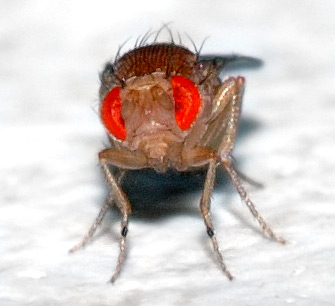 We had recently discovered a Spiroplasma bacteria in Drosophila neotestacea, and it didn't seem to be doing anything to enhance its own transmission. So, I wanted to see whether or not maybe they provided some sort of benefit for flies that are parasitized by nematodes and lo and behold, we found in the lab that they had a whopping effect. When we look at this out in the field, it was equally strong or even stronger. So there was more than a tenfold increase in the fertility of female flies if they carried the Spiroplasma.
We had recently discovered a Spiroplasma bacteria in Drosophila neotestacea, and it didn't seem to be doing anything to enhance its own transmission. So, I wanted to see whether or not maybe they provided some sort of benefit for flies that are parasitized by nematodes and lo and behold, we found in the lab that they had a whopping effect. When we look at this out in the field, it was equally strong or even stronger. So there was more than a tenfold increase in the fertility of female flies if they carried the Spiroplasma.
Ben - So they obviously give an enormous advantage in fertility, but is there a trade off? Do the bacteria affect the flies? Do they need to eat more? Is it harder to fly? There must be something - they must be paying something for that advantage.
John - There probably is some cost. We haven't seen anything though. We're just wrapping up right now a population case experiment to look at the dynamics of the Spiroplasma infection in the absence of nematode parasites. We don't see any obvious fitness cost. Fertility is unaffected, the dynamics of the infection, it just seems to act like a neutral trait in the absence of the nematodes. So there may be a cost but it's not big enough for us to detect. The main problem is that the transmission rate is less than perfect. An infected female passes the Spiroplasma onto about 97% of her offspring. So in the absence of any selective benefit, that actually would be lost from the population very quickly.
Ben - And how have we seen the rates actually changing in the population and where have you got your flies from in order to look back historically and see the relationship?
John - Well, in the 1980s, virtually every single nematode parasitized fly that I collected was completely sterile. Recently, the situation has changed dramatically. Now, the vast majority of parasitized flies have some level of fertility - which is actually astounding. So based on that sort of evidence, I've been able to infer that the infection rate by Spiroplasma increased from about 10% in the 1980s to about 70 or 80% today - this is around Rochester. Also, I was able to get some museum specimens that actually, a former student of mine, Dave Grimaldi and I had collected in the 1980s, and we developed PCR primers to look for Spiroplasma in these museum specimens and it turns out that none of the flies, none of the 20, were infected with Spiroplasma from the 1980s. So, the confidence limits on that are around 0 to 15%, so our best guess is that the infection frequency was around 10 to 15% in the 1980s, and that's increased dramatically in the last 20 years.
Ben - That's definitely a significant change. Is this the only example that we know of, of an infection like this offering a selective advantage?
John - There's actually a handful of cases now that have been published. So there's a very nice example of a bacterium called Hamiltonella which provides aphids resistance against parasitoid wasps. There have been more recent studies of Wolbachia which is another endosymbiotic bacteria, conferring resistance to RNA viruses in Drosophila and in mosquitoes. So there are few examples. The previous studies have all been done in the laboratory so we've actually been able to show that this works out in the wild, and also, we've been able to estimate the relevant parameters that govern the dynamics, and those parameters are consistent with this very rapid increase in the infection in the last 20 years.
Ben - So, how can this tell us a bit about evolution? As I said in the introduction, the mechanism is very similar, but instead of a gene, we have this symbiotic infection. What can we learn about the way that the flies have evolved from this mechanism?
John - Well I think this may be the tip of the iceberg, these few cases that have been found so far. People have been surveying insects now for the last 10 years or so for infection by endosymbionts. There are a number of species of endosymbionts that infect insects and it turns out that the majority of insect species are infected by one or more species of endosymbionts. In the vast majority of cases, we have no idea what they're doing and I wouldn't be surprised if in many cases, the endosymbionts actually provide some kind of protection against some kind of natural enemy that they encounter in the wild. It's exactly analogous to adaptation by spread of a beneficial mutation. So all the standard criteria for evolution by natural selection are met in this case, but it just doesn't involve a gene.
Ben - This brings me on to my final question that you said most insects we think of probably got a relationship like this. Can this tell us anything about tackling bugs that are a problem, those that carry disease?
John - There are a couple of human diseases - river blindness and lymphatic filariasis, also known as elephantiasis. These diseases are caused by nematodes that are carried from person to another by insect vectors, black flies and mosquitoes. So it's occurred to us that if Spiroplasma adversely affects nematodes in these insect vectors, the same way it does in Drosophila, one might be able to use Spiroplasma as a means to actually control the spread of these particular diseases which infect tens of millions of people in tropical regions especially Africa. So it's a potentially novel means of controlling these particular diseases.
Ben - Well this is a wonderful finding. A very elegant paper and it's nice that there's so many different angles to take from it, but thank you ever so much for joining us. That was Professor John Jaenike from Rochester University.
Related Content
- Previous The problem of oil spills
- Next Lasers in Medicine










Comments
Add a comment